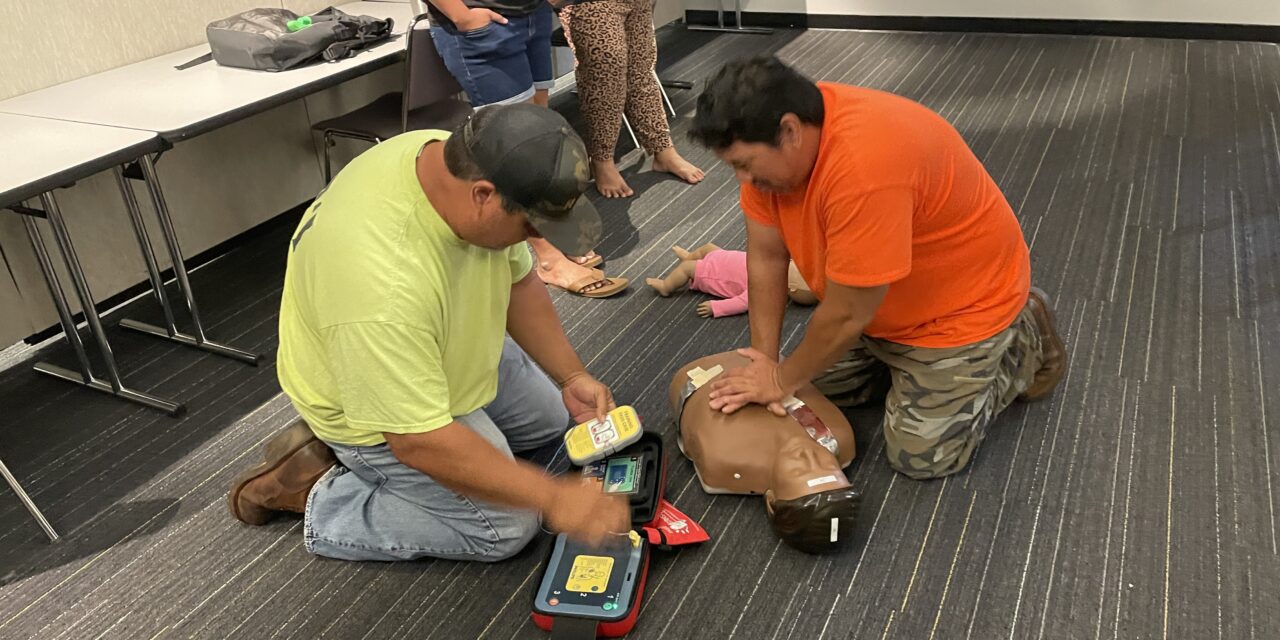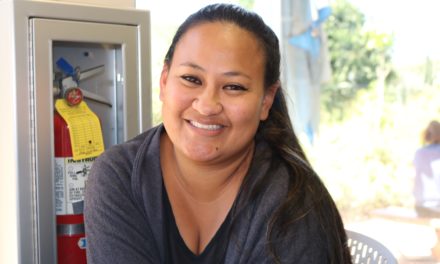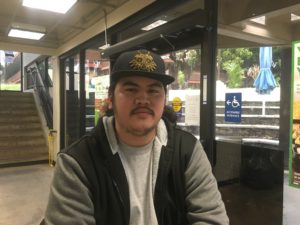CPR AED classes provided by the American Heart Association are available by appointment and give participants the necessary experience and instruction they need to feel confident in assisting someone having a medical emergency. (Photo by Cameron Enomoto)
By Cameron Enomoto | Staff Writer
“CPR can mean the difference between life and death for someone whose heart has stopped beating.”
We hear this all the time along with alarming statistics about the survival rate of cardiac arrest patients, though who takes it seriously? Most people sit back on their couch while watching commercials and think, “Well that probably won’t happen to me,” but the matter isn’t whether or not it happens to you. It’s about having the necessary skills to save someone’s life.
A 2018 study by the Cleveland Clinic showed that only 54% of Americans know how to perform CPR. Of that percentage, only 1 in 6 knew the recommended bystander technique when performing CPR. Before I took a CPR AED class in early October, I had no idea how to perform CPR properly, and I would have been hesitant to do so out of fear of being sued. While I have never had to perform emergency services before, it is something that everyone should know because it could be needed at any time. Additionally, CPR is easy to learn. Anyone can learn how to do it correctly in a few minutes. I was able to take the class with my parents and two younger sisters so we all know what adequate CPR looks like. The American Heart Association (AHA) states that approximately 70% of cardiac arrests happen at home and I feel safer knowing that my family members would be able to assist me in an emergency until help arrives.
CPR stands for cardiopulmonary resuscitation, and contrary to older practices, only chest compressions are recommended instead of additional mouth-to-mouth. Emergency responders suggest using the acronym “Call, Push, and Respond” to remember what to do in the event of an emergency. Calling 911 sooner than later can increase the chances of a victim getting the lifesaving medical attention that they need. Depending on where you are, it can take up to 20 minutes for help to arrive on the scene.
Push means to begin CPR immediately. According to Medline Plus, permanent brain damage occurs only after 4 minutes without oxygen. CPR utilizes chest compression to mimic the way the heart pumps blood. Doing so allows oxygenated blood to continue flowing throughout the body. Respond prompts bystanders to use an AED to restore the heart rhythm to normal. However, the instructor from my CPR AED class said that it is crucial to continue CPR while the AED is administered and to only stop compressions when the AED delivers a shock. Immediately after that compressions should resume.
It’s easy to remember the procedure in a calm state of mind; it’s a completely different story when there’s a person struggling in front of you. In order to ensure that the CPR being administered is not sloppy, emergency responders recommend switching out with another bystander if there is one nearby. For example, if you were performing CPR on someone for 1 minute, have another person switch with you and continue compressions. This will allow you time to rest and increases the chance that the rate and depth of compressions are adequate.
For those who are worried about legal trouble, the Good Samaritan law provides protection for those who administer emergency care without financial compensation or expectation of financial compensation. Additionally, any person who renders aid to a victim of an accident or emergency is not liable for any civil damage resulting from the person’s acts or omissions. This means that any person can perform CPR or use an AED to assist someone else in the case of an emergency without the risk of being sued. The person does not have to be CPR certified either.
To help maintain rhythm during CPR, the AHA recommends having a song in mind while doing compressions. The suggested rhythm is approximately 100 to 120 beats per minute (BPM). Some of the songs used include “Stayin’ Alive” by the Bee Gees, “Uptown Funk” by Bruno Mars, and “Dancing Queen” by ABBA. Ironically, “Another One Bites the Dust” by Queen is also a song that meets the BPM requirement for CPR.
While reading up on proper practices is helpful, taking a CPR AED class with an instructor provides an in-depth experience and can further prepare people to assist others in a medical emergency. The AHA in Honolulu is offering CPR AED classes by appointment, and each costs $95. The course entails a 3-hour workshop with presentations and hands-on activities where participants are able to experience examples of emergency situations and respond to them appropriately. Additionally, please be mindful of where AEDs are located on campus and in workspaces. At KCC, there are AEDs located in the ʻŌhiʻa cafeteria and the Kauila building.
Emergencies can happen anywhere at any time, so it is important to be observant and take immediate action if there is someone who needs help. All it takes is one person stepping in to make a huge difference.






